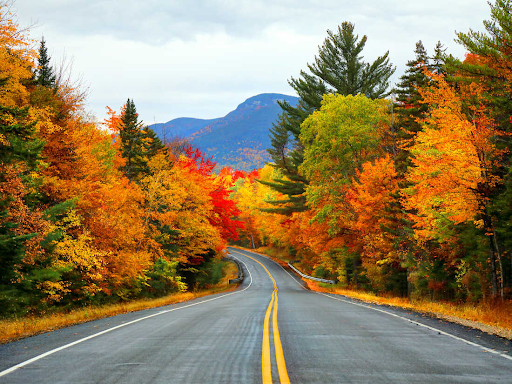Why do leaves change color?

In the fall, leaves turn vibrant colors. But why?
Fall is the enchanting season where trees change from displaying green hues to exhibiting the rich, vibrant colors of red, orange, and yellow. Many people claim fall as their favorite season because of the beauty emanating from the trees. But how many people actually know the reason behind the dynamic coloration of the nature around them? Some people watch the leaves change color their whole lives, never questioning the “how” behind this drastic change. Well, leaves contain a chemical called chlorophyll, which is what gives them their green coloration. Leaves don’t only contain green pigment, but also orange and yellow pigments, which are concealed by the large amount of green pigment present.
I know this may sound like a huge list of facts, but it is actually quite interesting to understand what is happening to produce the changes occurring around you. Now, I hope you remember my mention of chlorophyll and pigments, because those are the changing factors in the leaves that result in their unique coloration. An article from the College of Environmental Science and Forestry says that as the days shorten and the temperature cools, the leaves actually stop producing food for themselves. Why do they do this, one may wonder? Well, it is because plants need to conserve their energy in the winter, when the bite of cold weather nips at the trees, in order to sustain themselves. To conserve energy, the plants cease to exert energy in an attempt to grow leaves or fruit. According to Lyndon Tree Care and Landscaping, this process is called dormancy, and it happens during the periods where there is less sun for the tree to use and the frosty winter air is present. When trees prepare for dormancy, the chlorophyll breaks down, and the green color disappears, allowing for the other pigments (orange and yellow) to show through in the leaf’s appearance.
But hold on a second, where do the red and purple tints come from? Well, that is an excellent question. The College of Environmental Science and Forestry explains that certain chemical changes occur that result in the exhibition of red anthocyanin pigments, which explain why some trees model reddish or even purplish tints. Basically, the colors displayed on the trees are a result of chlorophyll remains and other pigments combining during the season of autumn.
I hope that you learned a little something about trees and their leaves, and that you now understand why they change color. And now you can look at the trees around you during this period of autumn and think: “Wow, there are so many chemical changes occurring in that tiny, insignificant little leaf.” Okay, I doubt anyone would think that, but seriously go and enjoy the beauty of the trees!!!
By Kate Ladino ‘25, Contributing Writer
25kladino@montroseschool.org















